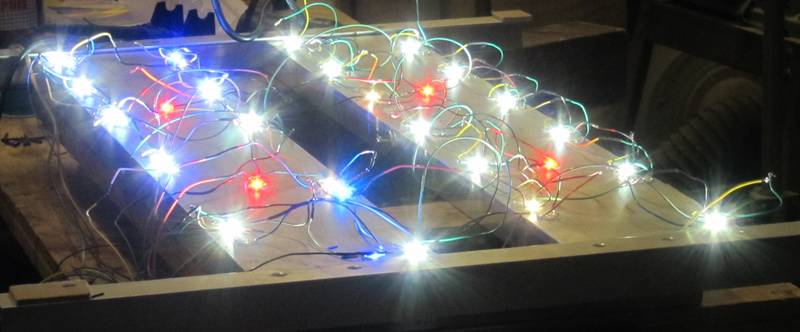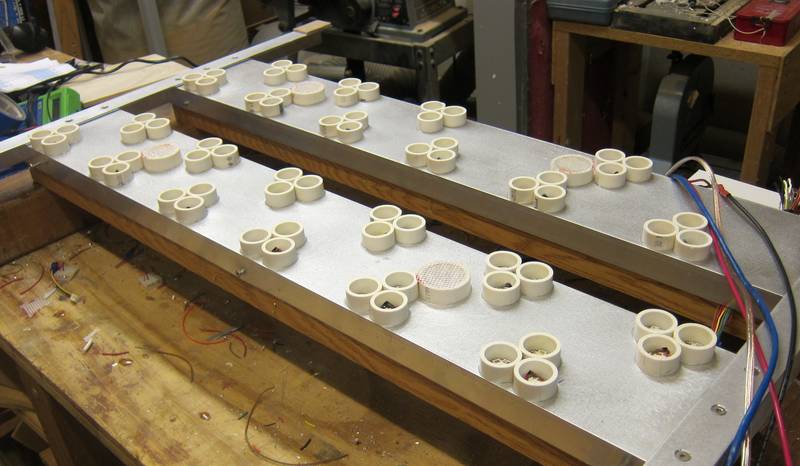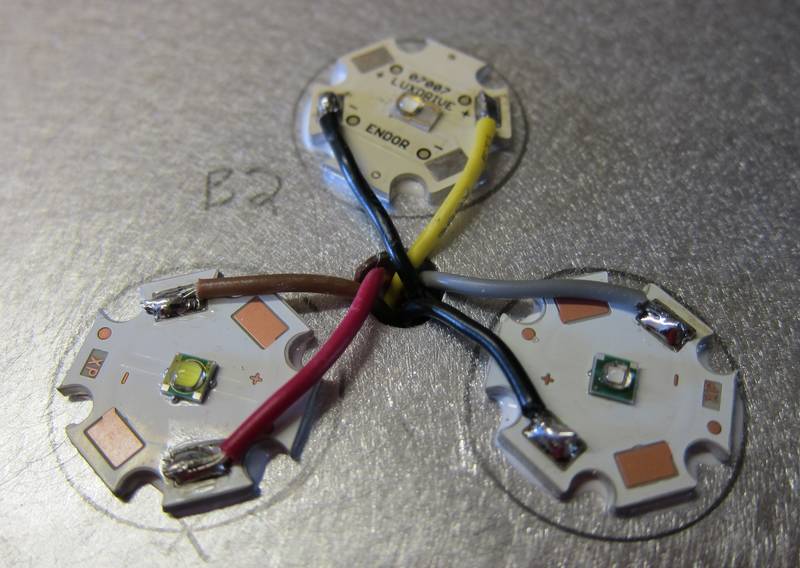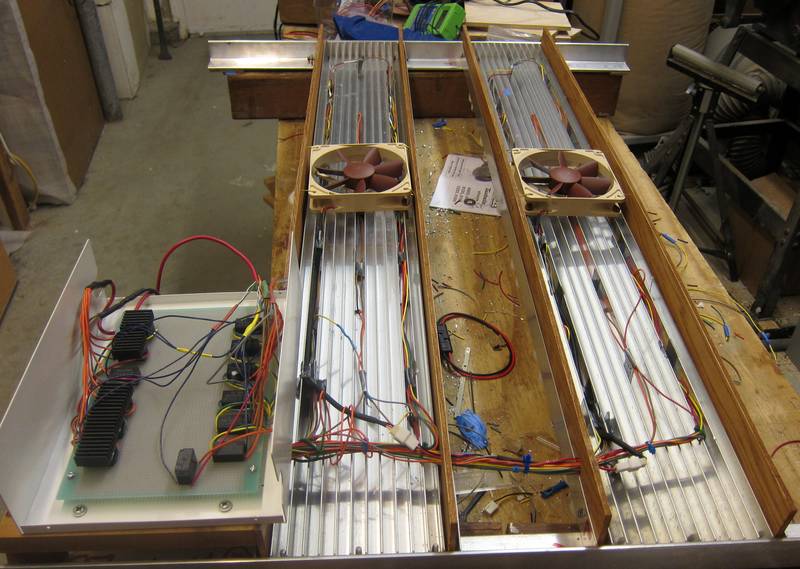You are using an out of date browser. It may not display this or other websites correctly.
You should upgrade or use an alternative browser.
You should upgrade or use an alternative browser.
an open ended discussion in Full Spectrum LED concepts
- Thread starter HiFidelity
- Start date
sfsuphysics
Supporting Member
Damn my neck hurts just looking at all those stars needing to be soldered... 
BTW where is the club PAR meter... I'm waiting for someone near SF to get their hands on it so I can test out my fixture... but don't want to drive all the way to wherever in the East Bay it probably is.
BTW where is the club PAR meter... I'm waiting for someone near SF to get their hands on it so I can test out my fixture... but don't want to drive all the way to wherever in the East Bay it probably is.
Pretty sure John (Aqua Nut) has it.Damn my neck hurts just looking at all those stars needing to be soldered...
BTW where is the club PAR meter... I'm waiting for someone near SF to get their hands on it so I can test out my fixture... but don't want to drive all the way to wherever in the East Bay it probably is.
http://www.bareefers.org/forum/index.php?threads/bar-tool-repository-par-meter.13871/page-3
sfsuphysics
Supporting Member
now lets see if I want to bother with my light to bring it 
HiFidelity
Guest

No worries at all in regards to soldering, aside from using professional equipment I've done/seen much harder jobs. The toughest one I did was replacing an LCD display in the center of a late model Audi instrument cluster, let me tell ya that is one heck of a job. The whole thing feels like a semi-flexible piece of plastic (the display) bonded to a strip of negative film (photography film if you've ever held one) which is very thin with tinned strips at the end of it & if you are a few degrees off the damn thing melts apart and you've just destroyed a $100 piece of fragile electronics. That and 5 years as a tech for sprint (phones have ridiculously tiny electronics in them) have sort of informally taught me some not too shabby soldering skills.
So basically the accuracy and speed I certainly have (didn't mean to brag
HiFidelity
Guest
The PAR meter would be really cool to try once my setup is complete, a few days ago I was researching a fiber-optic spectrometer but maybe that's a proposal I can make at some point in the future for the club to own. It would be so perfect if we can measure PAR, Spectrum & CRI
What, you don't want your wiring to look like this?

Picky picky...

Actually, it ended up like this once I put wires down through holes, into a harness tucked into the heat sink:

I used more than just red and black wires.
Different LED types had different colors.

But it was a lot more work and wires that way. So not always the best.

Picky picky...
Actually, it ended up like this once I put wires down through holes, into a harness tucked into the heat sink:

I used more than just red and black wires.
Different LED types had different colors.

But it was a lot more work and wires that way. So not always the best.
HiFidelity
Guest
Very nice work you did there, I always prioritize doing a clean smooth job I just figure in the long run things are more reliable, with cars at least this was always a good discipline.
By the way what is that luxdrive LED?
By the way what is that luxdrive LED?
That is a Neutral White Luxeon Rebel.
Most of the other clusters have cool white XP-G, but I did a few with neutral white.
I wish I had done all neutral white.
--
Actually, I have two fixtures, left and right sides. The second one I built is really nice and clean, in picture.
The first ... not so much.
Most of the other clusters have cool white XP-G, but I did a few with neutral white.
I wish I had done all neutral white.
--
Actually, I have two fixtures, left and right sides. The second one I built is really nice and clean, in picture.
The first ... not so much.
If you are curious, this is the top view.
Box on left are the current drivers. (Top of box removed)
I wish I had thermal-glued those to the heat sinks, and eliminated the box. Oh well.
I used RECOM drivers off of a big 24VDC supply in the garage.
Fans were not really needed in the end either.

Box on left are the current drivers. (Top of box removed)
I wish I had thermal-glued those to the heat sinks, and eliminated the box. Oh well.
I used RECOM drivers off of a big 24VDC supply in the garage.
Fans were not really needed in the end either.

sfsuphysics
Supporting Member
My guess is no. I would think the limiting factor in use of light is the actual sensitivity to particular wavelengths of the zooxanthellae which IIRC doesn't change.would animals normally exposed to shallow water light (more red im guessing) benefit from the use of more of a red spectrum? I do need to read up a bit on what spectrums are filtered, and at what depth, to clarify my question more i guess.
HiFidelity
Guest
Hi, I'll speak on my build thus this is my own opinion;
If you do not use Cool White, and all your white LEDs are Neutral White then you are getting plenty of red from your NW LEDs for coral growth, now if you want a little more red than that it is not recommended that you use RED LEDs (in the 650nm range) because these are like crack for algae and of course you don't want that. I recommend supplementing the whites with Warm White LEDs which generally have the highest output near the red/yellow range and I would only do a ratio of 1:4 WW/NW (warm white to neutral) also I would put them on a separate channel so that they can be dimmed separately from the other colors.
Supplementing red is typically fine as long as you choose the right LEDs for it but the corals will benefit more when the focus is on violets & blues because this is the part of the spectrum that promotes the most growth, which is why if you read through what I said a few posts back you'd notice that I am using a variety of violets & blues in attempt to fill as much of that part of the spectrum as possible.
If you do not use Cool White, and all your white LEDs are Neutral White then you are getting plenty of red from your NW LEDs for coral growth, now if you want a little more red than that it is not recommended that you use RED LEDs (in the 650nm range) because these are like crack for algae and of course you don't want that. I recommend supplementing the whites with Warm White LEDs which generally have the highest output near the red/yellow range and I would only do a ratio of 1:4 WW/NW (warm white to neutral) also I would put them on a separate channel so that they can be dimmed separately from the other colors.
Supplementing red is typically fine as long as you choose the right LEDs for it but the corals will benefit more when the focus is on violets & blues because this is the part of the spectrum that promotes the most growth, which is why if you read through what I said a few posts back you'd notice that I am using a variety of violets & blues in attempt to fill as much of that part of the spectrum as possible.
HiFidelity
Guest
oh I sorta missed the whole question 
The corals can and will absorb reds but then again will they really use it as much as violets & blues? probably not (based on everything we've accumulated through the practice of reef keeping) now plug in my answer posted above
The corals can and will absorb reds but then again will they really use it as much as violets & blues? probably not (based on everything we've accumulated through the practice of reef keeping) now plug in my answer posted above
HiFidelity
Guest
interesting article today with spectral data from natural sunlight;
http://www.advancedaquarist.com/2013/11/aafeature
http://www.advancedaquarist.com/2013/11/aafeature
Scanned the article. The spectral data seems to be way in the red. Perhaps that is because the sample is only 2 inches below the surface!
How many of our organisms are collected from a depth of 2 inches? I'd love to see info from a more realistic depth. (making the assumption most collected corals are not just 2" deep)
How many of our organisms are collected from a depth of 2 inches? I'd love to see info from a more realistic depth. (making the assumption most collected corals are not just 2" deep)
sfsuphysics
Supporting Member
Not terribly surprising results. Regardless of what the graphs show, sunlight is fairly constant across all wavelengths only really dropping in deep violet and red sides any significant amount. The amount of red he shows might be an artifact due to the fact he picked the "red" bandwidth to be over 100nm wide. Not quite certain why he chopped things into so many different categories around green though, green-blue, blue-green, yellow-green but no orange-red.
I wish he had some data of just above the water, curious if 2 inches of water would change any of that data in a significant amount, different wavelengths bending different amounts and all that.
I wish he had some data of just above the water, curious if 2 inches of water would change any of that data in a significant amount, different wavelengths bending different amounts and all that.
HiFidelity
Guest
I think this is a great point in the right direction, judging by the relation between that article and the one before it I would say it's likely more is to come and hopefully in a more applicable range deeper than 2".
It's still great data in the sense that it is measuring the right parameters, perhaps this is only useful for playing around with a frag tank where growth is the ultimate goal, but hopefully this is just the beginning of a comprehensive research into light spectrum and more relevant to the artificial ways we light our corals.
It's still great data in the sense that it is measuring the right parameters, perhaps this is only useful for playing around with a frag tank where growth is the ultimate goal, but hopefully this is just the beginning of a comprehensive research into light spectrum and more relevant to the artificial ways we light our corals.
